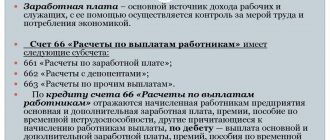The concept of a shift schedule
Shift work, 2/2 shift schedule - this, as many employers claim, is a very common mode.
You need to work in two, three, four shifts, which are introduced if the duration of production processes is higher than permissible during daily work, as well as for the most efficient use of equipment and increasing production volumes. Now that you know what a 2/2 work schedule is, let’s look at its features in more detail. The days of operation in this mode during the week will also differ from usual. When establishing a shift format in an organization, the employer must form several teams. They work in turns, which makes it possible to ensure a smooth process.
A two-by-two work schedule is one of the possible options for shift work. This algorithm is the most popular in practical activities.
A special feature of the regime is that the length of the working day goes beyond the 8 hours required for a five-day week. You must be present at the workplace both on weekdays and weekends. If an employee working in shift mode falls on a holiday, the work will be paid in a single amount.
First quarter
Thus, the duration of the “New Year's holiday” will be 8 days - from January 1 to January 8, 2021. In May 2021, the rest period coinciding with the celebration of the Spring and Labor Day will have 5 non-working days - from May 1 to May 5, and on coinciding with the celebration of Victory Day - 3 days - from May 9 to 11.
Third quarter
Decree of the President of the Russian Federation dated June 1, 2021 No. 354 “On determining the date for holding an all-Russian vote on the issue of approving amendments to the Constitution of the Russian Federation” in accordance with the Law of the Russian Federation on the amendment to the Constitution of the Russian Federation dated March 14, 2021 No. 1-FKZ “ “On improving the regulation of certain issues of the organization and functioning of public power” is determined as the date for holding an all-Russian vote on the issue of approving amendments to the Constitution of the Russian Federation. This day is a non-working day. Payment to employees for this day is carried out in accordance with the provisions established by the Labor Code of the Russian Federation in relation to payment for non-working (holiday) days.
- from 1 (Wednesday) to 8 January (Wednesday);
- from 22 (Saturday) to 24 February (Monday);
- from 7 (Saturday) to 9 March (Monday);
- from 1 (Friday) to 5 May (Tuesday);
- from 9 (Saturday) to May 11 (Monday);
- June 12 (Friday);
- November 4 (Wednesday).
We recommend reading: Travel by Railway Veterans of Labor
We have collected information about all official holidays and transfers of days off in the coming year and remind you of the rules for calculating working hours for a week, month and year. At the end of the article you will find a production calendar that you can download or print.
Working time standards: how to calculate?
- New Year holidays and Christmas - from January 1 to January 8;
- Defender of the Fatherland Day - February 23;
- International Women's Day - March 8;
- Spring and Labor Holiday and Victory Day - May 1 and 9;
- Russia Day - June 12;
- National Unity Day - November 4.
The 2021 production calendar has already been approved by the Government of the Russian Federation, and its text is available for free review. The total number of working hours is 1,979 per year. Anything that exceeds this figure is considered processing, which must be paid separately.
In accordance with Articles 100 and 189 of the Labor Code of the Russian Federation, the working hours are established by the employer in agreement with the employee. The length of the working day is necessarily fixed in the employment contract.
How are working hours determined?
If we start from the most common cooperation schemes, then with a 2/2 shift schedule the duration of one shift is 10-12 hours. At the same time, we would like to remind you that the legislation does not regulate the duration of one work shift. It is established by the employer independently, based on normal, generally accepted standards.
- FULL NAME. and positions of employees who will work in this mode;
- number of workers per shift;
- duration of duty;
- the order of their alternation;
- rest and meal breaks;
- acquaintance note.
Article 102 of the Labor Code of the Russian Federation indicates the need for agreement between the employer and workers on the start and end times and the total duration of work. If the organization has a union, its opinion should be taken into account when drawing up the schedule.
How long are you allowed to work per day in shift work?
To comply with labor laws, the employer must provide a number of conditions. First of all, keep a summary record of working time and monitor that limits for enlarged periods (month or quarter) are observed.
Labor legislation, protecting the rights of the employee, introduces certain restrictions on the use of labor in the evening and at night and, as, indeed, under any working time regime, requires an established ratio of work and rest time.
As an example, let us take the process of manufacturing products on a continuous cycle conveyor line. In this case, production equipment must operate around the clock, including Saturday and Sunday - traditional days off. This equipment loading mode creates the need for a similar work schedule for workers engaged in production. Thus, the described production process requires the introduction of a shift work schedule.
Shift work as a type of employment according to the Labor Code of the Russian Federation
However, employers who practice shift work often find it difficult to adhere to the principle of a normal working week of no more than 40 hours. This is due to the specifics of the production process. In this case, Art. 94 of the Labor Code of the Russian Federation allows the employer to use summarized recording of working time.
!
Based on Article 112 of the Labor Code, if a day off coincides with a non-working holiday, the day off is transferred to the next working day after the holiday. The exception is weekends that coincide with non-working holidays in January.
In order to rationally use weekends and non-working holidays by employees, the Government of the Russian Federation decides: To postpone the following days off in 2021:
- from Saturday 4 January to Monday 4 May
- from Sunday 5 January to Tuesday 5 May
Working time standards for students
Starting in 2021
The Government of the Russian Federation has the right to transfer two days off from the number of days off that coincide with non-working January holidays to other days in the next calendar year.
We recommend reading: Payment of 5 thousand to labor veterans in January 2021, presidential decree
Semenov S.S. The salary is set at 40,000 rubles. The company has established a summarized recording of working hours. In March, all scheduled hours were worked (159 hours). The accounting period is 1 year (according to the production calendar, this is 1970 hours).
The legislative framework
The format of work in the 2-by-2 mode - what is the work schedule, what are its features established by the legislator? Labor Code of the Russian Federation in Art. 103 allows for the installation of a shift regime if the process in the institution is to provide round-the-clock services. The head of the enterprise creates and regulates schedules.
Work activities in shift mode (this is a variant of what schedule 2/2 is called) include the following articles of the Labor Code of the Russian Federation:
- Art. 102 - work in a flexible format;
- Art. 103 - shift schedule;
- Art. 104 — accounting of labor time;
- Art. 105 - permitted methods of redistributing labor time.
Production calendar with a shift schedule
The official production calendar for 2021 with holidays and weekends contains information about working days, weekends and holidays. It allows the management of enterprises and institutions, business owners to organize the production process, accountants to calculate salaries and pay sick leave to employees, and each employee to build and implement their life plans. In this review we will talk about the production calendar approved by the government of the Russian Federation with amendments and changes and about its features that should be paid attention to.
Who works on a shift schedule
Shift mode - as the 2-by-2 work schedule is called, is used in institutions where you need to work around the clock. As a rule, these can be:
- emergency response services (EMERCOM, police, doctors), because their work is needed at any moment;
- non-stop cycle enterprises;
- institutions serving the population (hotels, cafes, security companies);
- transport companies (including train stations, airports);
- trading enterprises (if they provide services to the public 24/7).
The list is far from exhaustive; however, an organization can switch to shift mode at any time if the need arises.
Chart Features
Features of labor processes influence the established regime. However, in any case, it must be carried out in compliance with the conditions established by current legislation.
The schedule can be entered in relation to different time periods. Using summarized accounting, the employer establishes an accounting period.
The replacement format is introduced for a specified period or on an ongoing basis. The main thing is to determine the employee’s working time, which is not higher than the established duration for such a category. This means that neither overtime nor overtime is included in the plan (they are entered in the time sheet). It is important to consider that adequate rest must be provided during a 12-hour shift.
It is imperative to follow the provisions of Art. 94 of the Labor Code of the Russian Federation and take into account the employee’s membership in those groups for which a special work shift duration is determined, including a reduced duration.
The duration of the shift varies, depending on the needs of the organization. However, days off must be provided exactly according to the work plan. Working under shift conditions does not deprive the right to annual leave and paid sick leave.
The Labor Code of the Russian Federation does not establish the duration of the period for which a shift regime is drawn up. As a rule, this is one month, but the shift can last for a year.
It is prohibited to work on the night shift:
- under 18 years of age;
- pregnant women.
Women with children under 3 years of age, disabled people, single parents, and those caring for the sick can work at night (only with written consent).
Labor Code of the Russian Federation in Art. 154 determines the mandatory use of increased coefficients in relation to hours worked by an employee at night. The minimum amount is 20%. The maximum amount of additional payment and its determination is the right of the manager.
In general, Decree of the Government of the Russian Federation dated July 22, 2008 No. 554 establishes the same minimum amount of extra pay for night work for all employees, or rather a 20 percent extra pay for each working hour.
The specific amount of the increase in payment for going out at night is established:
- collective or labor agreement;
- local regulations.
The additional payment is calculated from the hourly tariff rate (salary per hour of work), that is, when establishing an additional payment for work at night, other additional payments and (or) allowances should not be taken into account.
Last year, my employer suggested that I switch to a two-by-two schedule, so that weekends in our organization would also be working days, and the work process itself would not stop. At first it was difficult for me to switch over to this option after the usual five-day work week.
But after a couple of weeks I adapted and really liked this schedule. Only my working days per month became only 15 instead of the standard 21. And for this reason, my salary also changed downward. Therefore, I decided to refuse such an offer. A similar shift schedule can be found in many organizations, and today I will tell you about it in detail.
The main nuance here is that a person goes to work on official days off if the shift falls on him. And all his work is paid in the same standard as on a regular working day, even if he has to work on a holiday. In addition, the following nuances can be highlighted:
- The increased number of hours is not considered overtime, despite the fact that with a 12-hour shift the employee works much longer.
- There is no overtime work here, since all work is carried out within the shift. If the company needs an employee to work overtime, an additional agreement on this is signed with him.
- If the shift is 12 hours, then it is necessary to comply with the number of days off during the week and month. The total number of working hours per month should not exceed 167 hours.
- The schedule is always drawn up for a certain period. It can mean a month or a quarter. Representatives of the trade union may participate in its preparation. In small enterprises, some employees can draw it up on their own, based on internal agreements.
- The duration of the shift may vary in different organizations, but the required day off must arrive on time. In addition, all employees are entitled to a standard 28 days of annual leave, unless certain benefits add additional days.
You can learn more about this from the video presented.
It can be calculated based on various options for recording time worked. There are several ways:
- Daily. In this case, payment is made by day, regardless of how many hours each employee’s shift was. Therefore, all overtime hours will not be taken into account. But if an employee goes to work an extra day, he will be paid in full.
- Weekly. In this case, records are kept for weeks, and the work itself is carried out in shifts in accordance with the schedule. And since there are only 7 days in a week, with a 2/2 schedule, it may turn out that one employee actually works 4 days, and another 3 days. But next week it will be the other way around.
- Summarized. This method takes into account several periods such as quarter, month or week. This method is usually typical for enterprises with a special nature of work. An employee may be regularly required to work overtime or overtime, but the employer regulates the total number of hours he works during a certain period. And his income is equalized with other employees during this period, or he receives a material additional payment for more time worked.
That is, the employer must set a certain rate for specific hours worked. This could be a fixed-time shift, a workday, or a workweek or month. And depending on the number of time periods worked, a general calculation is carried out. The greatest difficulty is usually the end of the period, when all processed shifts, days, and hours are calculated.
The amount of additional pay for night work is usually influenced by the following factors:
- minimum acceptable value 20%;
- premium coefficient, which is developed by the organization itself and recorded in the local acts of the enterprise;
- duration of work in the period from 22 to 06.
If you are still thinking about the possible transition to such a schedule as an employee, be sure to calculate how many hours per month you will actually have to work, and calculate the cost of each hour. Because at first it seems to many that such work is much easier than a five-day week, but as a result it turns out that the number of hours worked is much greater, and the payment for them is lower.
Also, before signing an agreement, be sure to familiarize yourself with the established work schedule in this company. It must include such nuances as:
- duration of each shift;
- the number of days off that must be after a shift, or in a certain calendar period;
- total number of shifts per month or other period;
- sequence of employees and their number;
- a set number of breaks and their duration throughout the shift.
After analyzing these conditions, you will be able to accurately determine the proposed conditions and decide how suitable they are for you.
Indeed, why is work with a 2/2 schedule in Moscow, and in other areas, in such demand? Yes, all because this option allows you to combine several professions. In other words, you can work part-time.
For example, the same Masha Ptichkina works at the checkout counter at the Shesterochka store on Monday and Tuesday, and on Wednesday Masha teaches song and dance lessons at home. There are a lot of examples of such combinations. And all because Russians are trying to earn more in order to provide themselves and their families with everything they need. But not everyone succeeds. So, for example, after two shifts at a factory there is practically no energy left for part-time work.
However, the 2/2 shift work schedule is beneficial not only to employees, but also to the employer. What exactly? Yes, because this type of working time allows the enterprise to ensure almost round-the-clock uninterrupted functioning. This option is very relevant for grocery stores, as well as for manufacturing and industrial enterprises. At the legislative level, this regime is enshrined in Article 103 of the Labor Code of the Russian Federation.
In other words, such a shift is convenient, the production cycle is not interrupted, therefore, stable revenue and income for the enterprise are guaranteed. In other words, shift work is convenient for both the employee and the employer. Therefore, the demand for vacancies with a 2/2 schedule in Moscow and other cities is quite high.
Postponement of holidays in 2021
The Ministry of Labor proposes that in 2021 the weekends of January 2 and 3 (Saturday and Sunday), coinciding with non-working holidays, be moved to November 5 and December 31, respectively (Fridays). The day off from Saturday 20 February is planned to be moved to Monday 22 February.
Holidays in 2021. Non-working days.
According to the production calendar in 2021, with a five-day work week with two days off, there will be 247 working days, including 4 working days shortened by one hour (February 20, April 30, June 11 and November 6), and 118 days off.
If a company has chosen a six-day week schedule, then Saturday, the 20th, is its standard working day, not preceding a holiday. This means that 20.02 is not shortened by one hour. But as a general rule, the duration of work on Saturday can never exceed five hours. For six-day workers, the shortened working day will be the 22nd; they work on that day.
As for the very definition of “pre-holiday days,” it is clear from the same Article 95 of the Labor Code of the Russian Federation that this is the day immediately preceding a non-working holiday. 22.02, from which the working date was moved to 20.02, meets this requirement.
Is February 20, 2021 a short day?
- February 20 - before Defender of the Fatherland Day;
- April 30 - before the May Day holidays;
- June 11 - before the celebration of Russian Independence Day;
- November 3 - before National Unity Day.
The Labor Code provides: if an official holiday falls on a Saturday or Sunday, then the day after the holiday becomes a day off (with the exception of New Year holidays). In 2021, several celebrations fall on weekends, hence three postponements:
- From 01.01 to 08.01 - long holidays dedicated to the New Year and Christmas;
- 23.02 - day off in connection with Defender of the Fatherland Day;
- 08.03 - the only day off on International Women's Day;
- 01.05 - Spring and Labor Festival, falling on Saturday in 2021;
- 09.05 - Victory Day, which falls on Sunday in 2021;
- 12.06 - Russia Day, which also falls on a general day off - Saturday;
- 04.11 - day off on National Unity Day.
Holiday weekends
In their work, the 2021 production calendar is necessarily used by labor economists, accountants, personnel officers and office management specialists. And besides them, any working person looks at this document several times to know how much and on what days he is supposed to rest.
30 Apr 2021 semeiadvo 1281
Share this post
- Related Posts
- From what date are benefits for labor veterans in housing and communal services?
- The cost of adding a plot of land in 2021 in the Shchelkovo municipal district
- Expense item for laboratory research
- What is the cost of living per child in the Kirov region in 2021?
Night shift
As a rule, the working day begins at 8 am or, accordingly, in the evening. An employee does not have the right to voluntarily change the schedule without agreeing with the employer. You can only work on your own shift.
The employer must monitor the uniform rotation of teams: each team works in turns on night and day shifts.
Labor organization algorithms may be different. So, an employee can work during the day, then in the evening or immediately at night. A format of 2 days during the day, 2 days at night is possible.
How is it paid?
Another logical question: 2/2 work schedule - how is it paid? Work time recording in a shift format is designed for short periods of time, usually a month. Accordingly, payment is calculated according to the number of shifts worked during the accounting period, that is, for the one for which the shift regime is established.
The schedule must be drawn up so that the employee develops a norm taking into account annual vacations.
The average working month in 2021 will be 164.17 hours with a 40-hour week. Overtime activities are subject to additional payment. In case of shortcomings, payment is deducted or paid in proportion to the time worked.
A work shift or part of it that falls according to the schedule on Saturday or Sunday is paid as a regular working day (Article 111 of the Labor Code of the Russian Federation). A shift on a day that falls on a holiday is subject to double payment. Work on a day that is a day off can be compensated by time off; hours of work are paid at a single rate. If the employee does not take time off, payment will be made at double the rate.
Thus, the enterprise has the right to decide whether to choose a shift mode in the 2/2 option or another. The main thing is to comply with working time standards.
I quarter
In accordance with part five of Article 112 of the Labor Code of the Russian Federation, for the purpose of rational use by employees of weekends and non-working holidays, weekends may be transferred to other days by federal law or a regulatory legal act of the Government of the Russian Federation.
You might be interested ==> Social benefits for travel for Kaluga pensioners
Working hours standards in 2021
In May 2021, employees will have a rest from May 1 to May 3 in connection with the celebration of Spring and Labor Day, as well as from May 8 to 10 in connection with the celebration of Victory Day. The weekend in connection with Russia Day will last from June 12 to 14, 2021, and in connection with National Unity Day - from November 4 to 7, 2021.
In 2021, residents of Russia are very lucky, since they will have to celebrate the New Year in a series of holidays. This time they will not end on January 8, as usual, but will last right up to January 10, since 01/10/2021 is Sunday.
Even more gratifying is the fact that the first Sunday in January will move to the last day of the year – 12/31/2021. On this day, the vast majority of people will have time to thoroughly prepare for the New Year celebrations and buy gifts.
How are weekends postponed in January 2021?
Thus, the situation does not change for shift workers in 2021. You will have to go to work according to your schedule. Moreover, if the working day falls on a holiday or weekend, incentive payments in the amount of double salary are provided.
To calculate the standard working time per month, the following method is used: the length of the working week (40 hours) must be divided by 5, multiplied by the number of working days in the month and subtracted the number of hours by which pre-holiday days were reduced (if they exist in a particular month) .
Calendar and shift work schedule - online calculation
“Shift work” here means work with non-standard working hours: alternation of working and non-working days, which are established by internal labor regulations - this is a term with a broader scope than its consonant “shift work”. The results of calculations of various shift work modes (JavaScript) are combined in one calendar, which allows you to visually determine, for example, coinciding weekend dates
Typically, the terminology “three in two”, “two in two” or “a day in three” is used to denote different modes of shift work, meaning alternating working days and weekends. Our data entry table displays these modes as follows: 3x2, 2x2 or 1x3, respectively.
The program offered here allows you to calculate and graphically display in the calendar up to 3 shift work modes or just shifts at the same time. All shift parameters are set in a single data entry table. Each shift is shown in a different color on the graph. For each calculation, the start date of work and the corresponding shift mode are established - the numerical ratio of working and weekend days alternating in the shift cycle.
The number of months displayed in the calendar chart can be set both before entering the shift parameters and after, but keep in mind that the page will be refreshed. Setting start dates in different months will also inevitably lead to updating the page (the entire range will be shown automatically), so it is advisable to indicate start dates within one month.
The “Schedule Status” parameter allows you to adjust the number and priority of displayed shifts: With the status “1”, the schedule of the corresponding shift has the brightest colors, with the status “2” the shift schedule is displayed in partial transparency mode, with the status “-“ (dash) the shift in the calendar not displayed. The chart status changes with a single click on the corresponding icon.
TASK: Three friends, three IT specialists, after the closure of the company where they had worked together for many years, finally found a new job, however, somewhere. The first got a job in the office of a large company on a shift work schedule of “3 through 2”, the second - at a perfume factory (it is dangerous for a man in a female environment to work more than two days), shift work “2 through 2”, the third for some reason climbed into a military “box” - “in three days.” When can they all meet together again? Work start dates are given in the data entry table for solving the problem
Let's get to the bottom of it
So, when installing, each specialist chooses a work mode that suits him. Some people find it convenient to work from nine to six and rest on Saturday and Sunday, while others like to work in shifts. In addition, a shift schedule allows you to work for several employers at once.
Therefore, the answer to the question: what is a 2/2 work schedule? - quite simple. For example, Masha Ptichkina works 2 through 2. She starts work on Monday, works a shift, and goes to work again on Tuesday. But Wednesday and Thursday are days off for Maria. This is the so popular 2/2 work mode.
Disadvantages of shift work
Of course, finding a job with a 2-2 schedule is not difficult. However, certain disadvantages of this work mode should be taken into account:
- In this type of work, working on weekends is considered the norm. For example, with a five-day workday, working Saturday will be paid at double the rate. And when 2 after 2 the working day off is considered a normal shift. There is no additional payment for work on days off.
- There are no overtimes either (in the usual sense). If the shift duration is 12 hours, then they will have to be worked. In the same comparison with the five-day period, a standard day lasts 8 hours. But the payment may be unequal.
- Billing period. Shifts are usually approved for an extended period. For example, for a month or even a quarter. But it is practically impossible to adjust the schedule. Those responsible for drafting very rarely agree to redo something. As a result, employees change on their own (negotiate). As a result, the employee may not receive payment for hours worked “out of shift.”
Please note that despite the length of the shifts, the weekend must arrive on time. In addition, an employee on a shift schedule has the same right to vacation as an employee on a five-day week. The minimum duration of vacation is 28 calendar days, unless additional vacation days are provided for by law or local regulations of the enterprise.
Payment for holidays during a shift work schedule
- for piecework work - no less than double rates;
- when paying at tariff rates - no lower than double daily or hourly rates;
- when working on a salary: if the work was carried out within the monthly working time standard - in the amount of at least one daily salary (daily/hourly rate) in excess of the established salary, and not less than double the daily salary (at double rate) if the employee worked beyond the normal time limit.
You might be interested ==> How much money do they give for 3 children in 2021 in Tatarstan
Related publications
If the employee agrees, then instead of double pay he may be offered time off. In this case, the salary for a worked holiday is calculated in a single amount, and the provided day of rest is not paid. An exception applies to conscripts whose employment contract is valid for less than 2 months - Art. 290 of the Labor Code of the Russian Federation does not provide for the replacement of double pay with time off.
January 1, 2, 3, 4, 5, 6 and 8 — New Year holidays; January 7—Christmas Day; February 23 - Defender of the Fatherland Day; March 8—International Women's Day; May 1 - Spring and Labor Day; May 9 - Victory Day; June 12—Russia Day; November 4 is National Unity Day.








